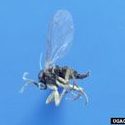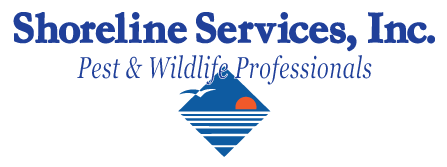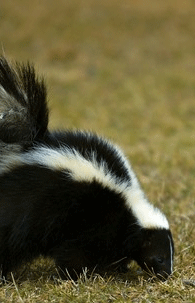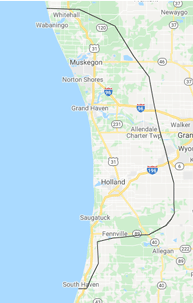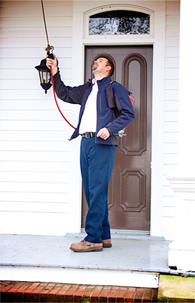Common Flies
Cluster Flies
Cluster flies are about 3/8” long, dark gray with no distinct stripes and short golden hairs. These flies get their name from grouping together when over wintering in structures. Adult flies lay their eggs in the soil and the eggs hatch in about three days. The larvae becomes parasitic in earthworms. The development time from egg to adult is about 27 to 39 days. The adults normally live outdoors. When cold weather approaches, adults move to structures to over-winter, usually on the sunny sides of the structure. When the walls or void areas start to warm where these flies are hibernating, they become active and move indoors, congregating around windows and doors. This usually happens on sunny winter days or in the spring. Shoreline Service’s Solution: Controlling cluster flies starts in the summer by sealing entry points. Although total exclusion usually is not possible, sealing cracks around pipes, windows, doors and other areas is helpful. Also, using a 16 mesh screen over roof vents, eave vents and weep holes is another control method. Treating the structure with a highly repellant insecticide outside around entry points will help in preventing the flies from entering. This should be done in mid to late August before the nights start turning cold. If cluster flies are visable inside in the winter or spring, they should be vacuumed up or use a space spray labeled for flies. Remember; this is only a temporary solution. (Image courtesy NPMA)
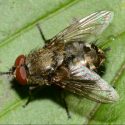
Fruit/Vinegar Flies
These small flies are about 1/8” long, including the wings, with a tan to black body and red eyes. They are attracted to rotting fruits and vegetables or food particles that are fermenting in water. Their life cycle from egg to adult takes about 8 to 10 days. They can multiply very rapidly. Shoreline’s Solution: The key to controlling fruit flies is sanitation. Remove the breeding sites and you will eliminate the problem. Sometimes this is easier said than done. A breeding site can be a fruit or vegetable that has been swept under a counter or other furniture and forgotten. Mop water that contains food particles, pushed under baseboards or in other void areas where it sits and ferments is another common source. Old mop heads have also been known to harbor fruit flies. Space sprays labeled for flies can be used to treat the adult flies but this is only a temporary solution. (Image © Jahoo/Dreamstime.com)
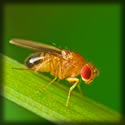
Moth (drain/filter/sewage) Flies
This fly gets its name from its fuzzy appearance and the areas that represent its typical breeding sites. It is about 1/16 to 1/8 inch long, gray to black in color. They are not very good fliers and when resting on walls, their wings form a heart shape. Breeding sites may include slimy drains and sewer leaks. These flies have also been known to come up through drain pipes when the drain trap has dried out. Shoreline’s Solution: The solution to this fly problem is to clean the drains to the trap line. This may take a stiff wire brush, and flush the trap with fresh water. Also fix any leaking sewer pipes. (Image © Jason Ondreicka – Dreamstime.com)
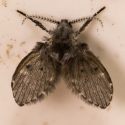
Phorid Flies
These flies are about 1/64 to ¼ inch long. They are also called “humpback flies” because of their humpback appearance from their side view, or “scuttle flies” because of the way they hop around in an erratic manner. They feed and breed in decaying matter of plant and animal origin. They are known to be a problem in morgues, mortuaries and mausoleums. Shoreline’s Solution: Eliminating the breeding sites is the key to control. Some breeding sites are decaying plant material, slimy drain pipes, soiled bedding materials and pet excrement in the bottom of cages. They also have been a problem in the soil around broken drain pipes. This problem can be difficult to find and fix. (Image courtesy Sandford D. Porter, USDA-ARS,Ctr.for Medical, Agricultural and Veterinary Entomology, Bugwood.org)
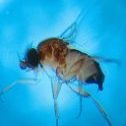
Fungus Gnats
These flies are very small. They may exist in moist or damp areas that support fungal growth like moisture in walls or ceilings or in pet excrement in the bottom of cages. The most common breeding sites in structures for these flies are over-watered potted plants. Shoreline’s Solution: Eliminating the breeding sites by drying them out or removing them will solve this fly problem. You also could treat the soil of the potted plants with an insecticide labeled for this type of treatment. (Image courtesy Gerald J. Lenhard, Louisiana State University, Bugwood.org)
